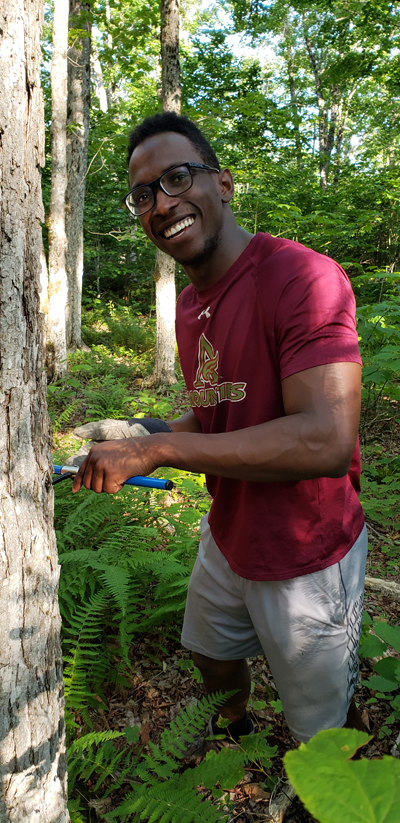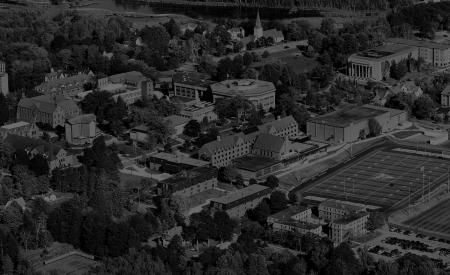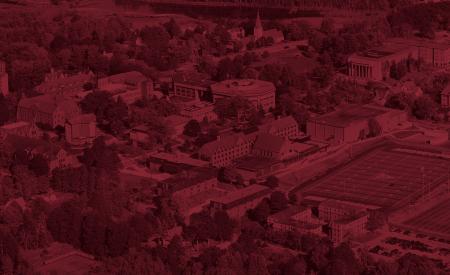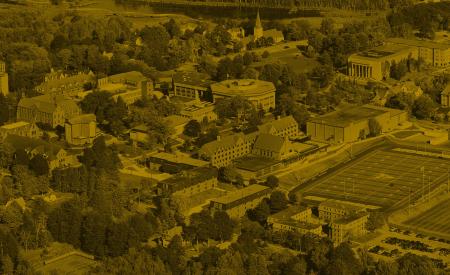Outdoor learning in Fundy National Park
Geography and Environment student researchers study park’s ecosystems on location
The rugged and beautiful coastline of Fundy National Park was home to more than just tourists and hikers last  August. Three teams of Mount Allison University student researchers were there studying some of the park’s key ecosystems. Combining scientific discovery and experiential learning, students in the course Research Methods in Environmental Science uncovered both interesting trends and new facts. Their projects included testing lakes for micro-plastics, measuring tree growth, and identifying the mysterious loss of a cohort of sugar maple saplings.
August. Three teams of Mount Allison University student researchers were there studying some of the park’s key ecosystems. Combining scientific discovery and experiential learning, students in the course Research Methods in Environmental Science uncovered both interesting trends and new facts. Their projects included testing lakes for micro-plastics, measuring tree growth, and identifying the mysterious loss of a cohort of sugar maple saplings.
The first two days of their expedition were spent exploring the park, and considering its various ecosystems with the aim of formulating research questions. The expedition was led by their instructor, Mount Allison alumnus Ben Phillips, who provided information on the history of the area and introduced them to some concerning ecosystem issues. Working in teams, the students come up with a research question to guide their investigation and field-work over the remaining week.
 “Having the opportunity to conduct actual research with meaningful results is what made this course most rewarding. The course develops skills such as the efficient design and execution of a scientific study, data processing and analysis, and the communication of scientific findings, the importance of which is emphasized throughout the course,” says environmental science student Casey Van Vulpen Doucet.
“Having the opportunity to conduct actual research with meaningful results is what made this course most rewarding. The course develops skills such as the efficient design and execution of a scientific study, data processing and analysis, and the communication of scientific findings, the importance of which is emphasized throughout the course,” says environmental science student Casey Van Vulpen Doucet.
“The hands-on work was both engaging and provided valuable experience and our project provided context and relevance to everything we did throughout the term.”
Because students choose their own projects, they were able to select ones they cared about.
For instance, the prevalence of micro-plastics in the environment is a serious problem that drew the attention of one of the groups. The team looked for micro-plastics in the park's lakes, and found them in all the lakes with human activity in their vicinity. Between 80 and 90 percent of these plastics originated from fabrics in people’s clothes.
Two teams focused on trees in the park: one studied tree-regeneration across different species and the other considered tree growth.
“The park staff have used reports from the students who took this course in the past, but it also brings awareness to them of new issues. For example, this year, one group found that most of the sugar maple saplings in the park had died off before 2010, and they alerted the park employees to something they did not know about. This was also the case of the group that identified a 20-year period of growth suppression for the sugar maples,” says Phillips.
According to Philips, "The structure of the course inevitably imposes some time-pressure on students in pulling their projects together; but they are doing real research, and their results matter in the world beyond the university."
Back at Mount Allison, students do laboratory work and data analysis. As the semester progresses, they continue to deepen their knowledge by learning different techniques that various Geography and Environment faculty use in their own research. The groups finish the year by giving a public presentation of their results to the community and staff from the Park and the Fundy Biosphere Reserve.
“I am interested in continuing my studies in the research field, so I plan to apply what this course taught me about time management and how to accomplish a research project without strict guidance,” says environmental science student Megan Gallant.
Researchers also compiled videos of their work while on location.
For more videos visit the Geography and Environment’s YouTube channel.




